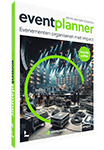There’s one thing that will always stay the same, no matter how much the planning industry will change in the future: Successful event professionals are always considering their attendees’ needs and motivations.
As event expert Kevin Van der Straeten highlights in his book, it’s compulsory to take into account the people who’ll be attending your event, and identify their certain wishes and expectations. That’s why you can’t start planning your event without mapping your guests’ previous needs.
What does this mean?
The same way startups and brands are advised to understand who their target group is, since this knowledge gives them greater insight about product changes or updates they have to make, event professionals need to actually understand what their potential attendees want to experience.
There are a million different questions to ask yourself about your attendees: Why are these people willing to attend your event? Do they have networking expectations? If so, whom do they want to meet and with whom exactly do they want to engage? What results are they expecting from interacting with other attendees? Or do they have no real expectations, and are just looking to escape the daily routine and enjoy an extraordinary experience? What are the elements that will make their attendance as enjoyable as possible? Do they want to listen to a specific speaker or thought leader? Whom do they consider an industry reference?
The only way you’ll get the answers to all of these questions is by mapping your attendees’ needs. Here’s how you can do it:
Step #1. Conduct social listening
Social media can be an outstanding tool for sharing and promotion. Yet it can be even more powerful when it comes to mapping your attendees’ needs.
Find out on which platforms your audience is hanging out. Narrow the search and identify the discussion groups (on Facebook or LinkedIn, for example) they are part of and hop on the board.
Read their posts and comment on other posts. What are their hopes? Is there an issue or a challenge they want to solve? Ask questions, start polls, initiate discussions, and see what they have to say.
Resist the urge to promote your event, and instead focus on listening. Discover their thought or narrative patterns and write them down. Gauge those observations and decide how to use them when planning your next event.
Step #2. Run an in-depth content analysis
In most cases, every audience has its thought leaders who’ll help them overcome specific problems. A good strategy to map your future attendees’ needs is to study these references and analyze the content they share with their target group.
What are they writing or talking about? What problems do they solve through their articles, videos, or podcasts? How are people reacting to this content? Knowing the answers to these questions will help you align your event with your guests’ expectations.
Step #3. Schedule live meetings with your potential guests
As Kevin writes, “Don’t try to think for your public, just ask them to express their own opinions! Make use of ‘the wisdom of crowds’ to enhance the quality of your event and to better understand the expectations of your target public (this is known as crowdsourcing). Don’t be afraid of feedback: learn to use it wisely.”
Interact with your potential attendees, talk to them in person, and search for insights in their answers. Don’t hide behind elaborate online forms or computer screens. One video call or meeting will give you more information than ten online strangers filling out your form.
Step #4. Plan using the A/B testing framework
If you want to succeed, you must be flexible and open to testing when planning or managing an event. This will help you better map your attendees’ needs.
For example, you could study which messages your potential guests will react to better, or which email campaigns will get you a bigger open rate. You can also experiment with different formats, keynote speakers, and networking dynamics.
Step #5. Attend competitors’ events and search for insights
Keep an eye on your competition. How are they planning their events? Which dynamics do they use? How do they reframe messages and communicate with their attendees? Chances are they’ve also studied their guests’ needs and expectations, and by attending their events, you’ll get a sneak peek into their perceptions.
Call to action
Your event’s value is directly proportional with your capacity to identify and read your attendees’ needs and motivations. That’s why, before planning your next event, you need to set up a strategy for mapping your guests’ needs and go out there to find out how your event can answer their questions and solve their dilemmas.






